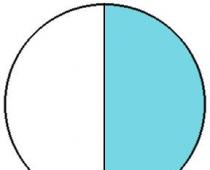Despite the fact that Hitler's Germany brought considerable harm to the economy and culture of Europe, and indeed of the whole world, its legacy is not limited to this. The architectural projects developed during Hitler's reign were astounding in their ambition and scale, many of which lasted until the defeat of Germany in 1945. Now Germany is moving in a different direction, but there are still buildings scattered around the world, reminiscent of the dark pages of the history of this country. This article talks about ten examples of Nazi architecture that have survived to this day.
Hitler's main headquarters, Wolfsschanze ("Wolf's Lair"), on the territory of modern Poland
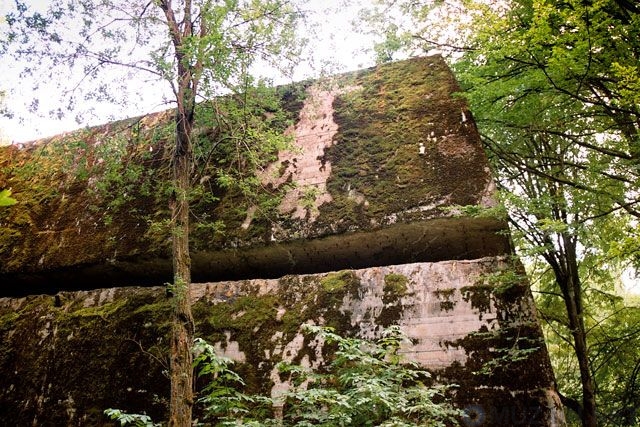
This complex was one of the most important headquarters in World War II. Based on the Eastern Front, the Wolfsschanze was built in 1941 in a location that was ideal for its privacy and conspiracy opportunities. Only pitiful remnants of what was once a huge complex that housed 2,000 Nazis and staff at the height of the war have survived.

This still huge fortress is now overgrown with moss, grass and other flora, hiding the ruins of one of the main command centers of the most destructive war that living people remember. And although many of the buildings were destroyed during the retreat German troops in 1945, evidence of the grandeur of the structure is still preserved, including the ruins of a cinema.
Underground factories and tunnels

To protect itself from the damage caused by the advancing troops, the Third Reich began to build armaments factories underground and a number of other economically important structures. This redeployment resulted in the conversion of several mines in Thuringia into military installations. At the central plant, concentration camp prisoners produced military equipment.


Until recently, the destruction of buildings prevented their exploration, but not so long ago, the entrance to tunnel A was reopened. Previously, it was closed due to floods and landslides, but this did not stop some adventurers from looking for adventures here, and certainly did not in any way prevent vandals in the 1990s from stealing materials.
Anti-aircraft towers of the Luftwaffe

During World War II, one of the main means of defense was the huge anti-aircraft towers, known as Flakturm. Three of them were built in Berlin. Buildings numbered II and III have survived to this day. Flakturm I was destroyed shortly after the war. Flakturm III is located in Humboldthain Park, and its walls are now covered with graffiti.
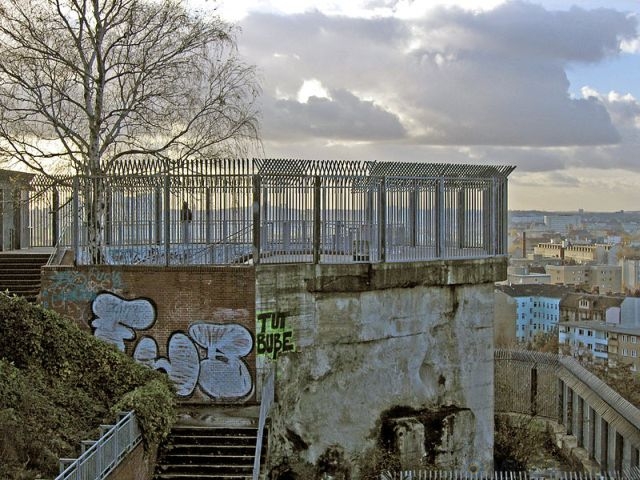
The massive tower was partially destroyed during the war, but still stands out from the park. And although initially powerful guns were installed in them, now these anti-aircraft towers have long been retired. The Flakturm II is also in relatively good condition.
Ordensburg Vogelsang on the German-Belgian border

Built in 1936 as part of a larger project of so-called "school castles", it was intended to educate a new generation of Nazi leaders. This is a huge complex with complex architecture and sculpture elements, which is now in a state of decline. Abandoned for decades, Ordensburg Vogelsang is now open to the public.

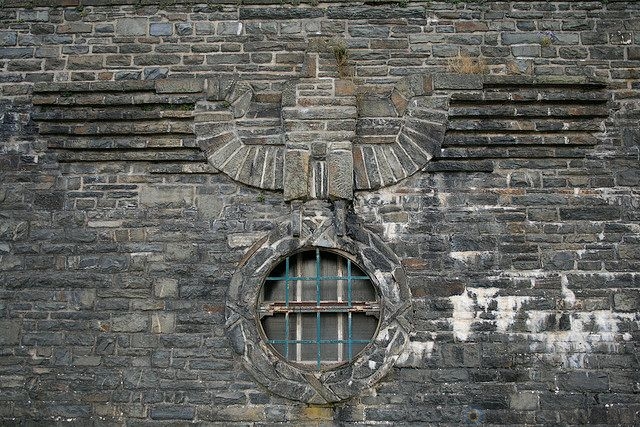
This became possible after the transfer of ownership of the castle to the German government in 2006. Currently, the government is faced with a difficult problem, because this building is a clear monument to Nazi ideology. Strong and dark images, symbols of Nazism are literally cut into the masonry.
Dachau concentration camp
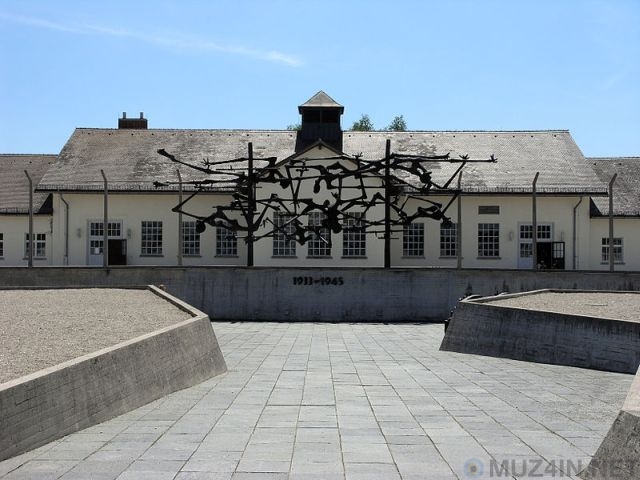
Not abandoned, but already definitely deserted, Dachau is now open to visitors who wish to pass through its intimidating corridors and chambers. One of the most gruesome testaments to the crimes of the Third Reich, Dachau was the first Nazi concentration camp which opened in Germany in 1933. It was originally founded as a temporary prisoner of war prison, later Dachau was used as a transfer point through which prisoners were sent to other concentration camps and death camps, such as Auschwitz.

Although not officially a death camp, it claimed the lives of more than 30,000 people. The main building today serves as a memorial to the fallen.
Bomb shelter near Anhalt railway station

Bomb shelter at Anhaltskaya railway station- one of the many defensive structures of the Second World War. Initially, the complex consisted of five floors and could accommodate 12,000 people.

Three floors of this huge gaudy-looking building are currently receiving visitors. On one floor there is a haunted horror room, on the other there is a museum of torture and the history of medical practice, and, finally, on the lowest floor there is a museum dedicated to the history of the bunker itself. This strange combination makes such a place an attractive attraction for visitors.
Abandoned Nazi resort Prora

When you think of the architecture of the Third Reich, spas don't come to mind. However, the abandoned resort of Prora on the coast Baltic Sea is one of the greatest ruins left after the Second World War.

Extensive ruins stretch for five kilometers along the beach. Now part of the building has been saved from destruction and repaired for tourists, and yet there are still many abandoned unexplored corners.
This ghost of a huge recreational complex, collapsing inside and out, rises above the beach and reminds of the role that Nazi architecture and ideology played in the life of all countries of the world.
Territory of the NSDAP congresses in Nuremberg

It is rather interesting that Albert Speer, who created a number of architectural structures of the Third Reich, before designing imagined what the structure would look like in the form of ruins. This strange design method of how buildings will look to future generations is not uncommon now, but in the 1930s the “Law of Ruins” was a relatively new concept.

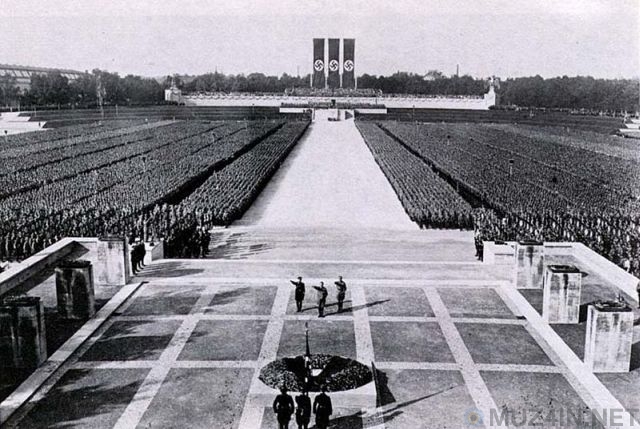
Now the German government faces another difficult choice: let the historically significant site collapse or spend huge amounts of money to restore the site, which has become a symbol of the darkest days of the 20th century.
Eagles of the Third Reich in the former Nazi territories

Despite all the efforts on the part of the allied occupation forces in Germany and the governments of the former German-occupied territories, it has not been possible to remove Nazi symbols from everywhere (including the swastika and coat of arms) to this day. The sculptures represent a seated eagle clutching an oak wreath with a swastika. On many eagles, the swastika was removed, but there are also those with a swastika.

These forgotten sculptures can be seen above the doors of the tax office on Bismarckstrasse and the barracks in Münster, and at Tempelhof Airport, as many as 6 eagles have been preserved at the corners of historical buildings.
Schwerbelastungskörper, Berlin
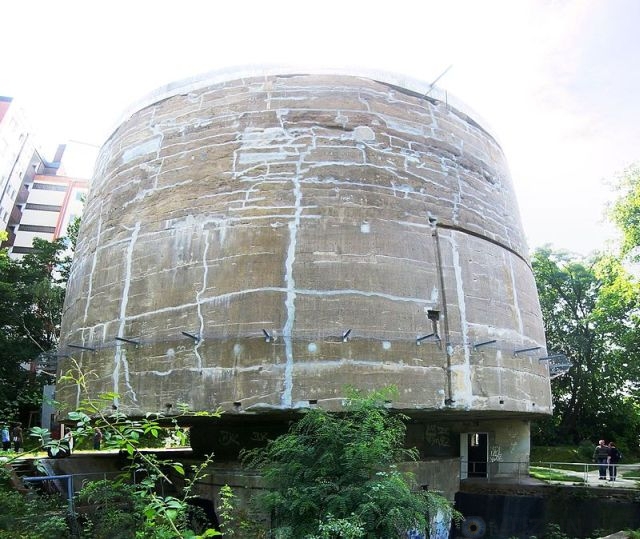
Too large and too close to residential buildings to be destroyed, this bizarre experiment in Nazi architecture was built in the 1940s and appears to be a simple, albeit huge, concrete cylinder. But in its interior with round corridors and rooms, one can clearly see his historical role at that terrible time. Today, the massive concrete monolith is gradually sinking into the ground, but for now it has become a place that vandals and street artists have become very fond of.
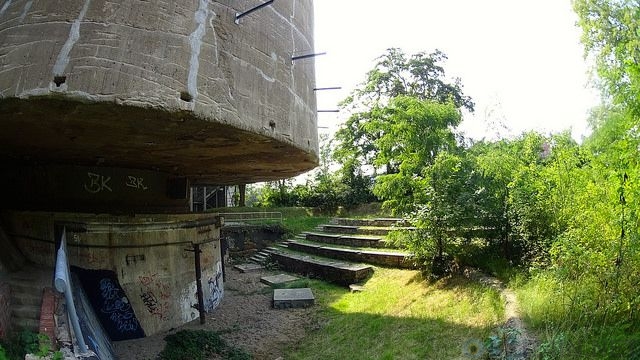
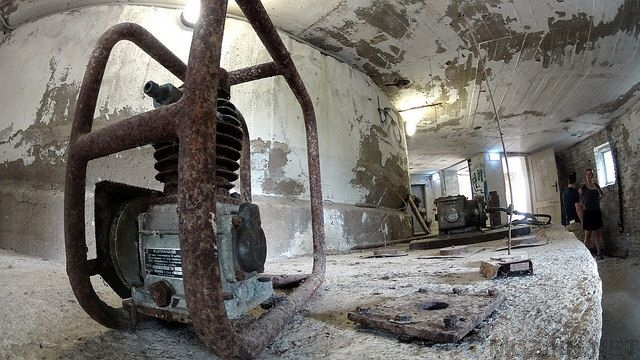
The Schwerbelastungskörper was built to test the resistance of soils to significant stresses. If the marshy soils of Berlin had withstood this construction, not far from this place a grandiose Triumphal Arch.
The material was prepared by Admincheg site and Lidia Svezhentseva
P.S. My name is Alexander. This is my personal, independent project. I am very glad if you liked the article. If you were looking for something and did not find it, then you have a chance to find it right now. Below is a link to what you recently searched for. I will be glad if I will be useful to you twice.
Copyright site © - This news belongs to the site, and are the intellectual property of the blog, protected by copyright law and cannot be used anywhere without an active link to the source. Read more - "About Authorship"
Are you looking for this? Perhaps this is what you could not find for so long?
I advise people who look at Adolf Hitler as the embodiment of all the worst that can be and Nazi Germany as the embodiment of World Evil and the Army of Darkness (please forgive me for extra pathos) I advise you not to read the following reflections. And in general, think about whose LiveJournal they read.
Despite the unfriendly introduction, reflections will not be about the acts of the Nazis at all, but about accompanying them, so to speak.
Each country now has an almost obligatory set of attributes: Flag, Coat of arms, Anthem for the state as a whole and many smaller attributes (in order not to go far for examples - the flag of the Russian Marine). Now the time is much calmer than the first half of the last century (according to at least at first glance), the ways of influencing the human mass have changed to more advanced ones and the state symbols now resemble more a tribute to tradition than anything else. Maybe I'm wrong, but from the Russian symbolism I immediately recall our tricolor flag (1. I hate the "tricolor" hybrid. a place to at least occasionally look straight ahead. Yes, there are, as I said, more "small" attributes, but now I'm still talking about national symbols and motifs in it.
The USSR in this regard will be richer, although not by much: a sickle and a hammer (worker and collective farmer), a pentagram. A bunch of agitation posters, but there are some common motives (red color, the proletariat, etc.). I confess: I don’t remember how socialism and red are connected. It seems that everything is somewhat deeper than the "flame ..." or the mentioned "..socialism", or the "...struggle" with someone there or for something there (well, quotes from Lenin's speeches do not pop up now) .
In terms of state symbols, I like the Third Reich. Yes, I understand why this is so: Hitler, who was leading the country out of the crisis and strengthening his power, needed leverage on the masses of people, and well-thought-out symbolism helps in this. Maybe, if you dig, in the same USSR everything will turn out to be no less interesting, but in this regard I have certain doubts.
Everyone remembers the Reich flag?
With the most "terrible" symbol, at the sight of which displeasure and hostility are usually reflected on the faces of passers-by. I am not going to argue that the swastika symbolizes the Aryan race. But with the fact that the swastika is an extremely ancient symbol, denoting at least the sun, found in many (if not in every) cultures, among which are the Slavic ancestors, I hope no one will argue. An extremely positive symbol with many derivatives. And if it were not for prejudice, then, most likely, he would have worn it in one form or another. The problem is that this symbol is under a moral ban, and where this ban is violated, the Nazi component is usually put on display. I have nothing special against such a component, it just distracts attention from the essence, which is not good.
With the coat of arms, everything is no less curious.
The eagle is revered in our country today. True, again, as a tribute to tradition, since this bird is more imperial. in addition to it, the same swastika, oak leaves. If you rummage through the Internet and books, this set of characters is literally taken apart by a feather. Oak leaves are one of the motifs. Which is found in addition to the coat of arms on awards, posters and is used as widely as an eagle with a swastika. Unfortunately, I don’t remember a specific interpretation and I can’t find it.
In addition, there was a great love for runes in the Reich, as an indicator of connection with the past. You don’t have to look far for an example - everyone has seen the emblem:
Yes, the example is already moving into the realm of particulars, but the rune motif was, after all, common to Germany in those years.
In general, I will even be glad if I turn out to be wrong about the symbolism of the Reich and in modern society or in the same USSR someone will find something not a curious opinion. But while the order of things remains such that in terms of paraphernalia, the Reich is more than just pleasant to me.
PS. All the information in the post is mostly taken from memory. on the other hand, almost the same thing can be easily found in Google on the first pages.
-- [ Page 2 ] --
The paragraph "Nationalism, chauvinism, militarism, anti-liberalism" analyzes the origins of German nationalism, as well as its evolution from a progressive and emancipatory movement in the past to a chauvinist one. In the context of the romantic current of philosophy and literature, the German national idea arose. The brightest representatives of this idea were Ernst Moritz Arndt, Johann Gottlieb Fichte and Friedrich Ludwig Jahn. They extolled the Germans as bearers of the highest universal human values. The most striking of their works were Fichte's "Speeches to the German Nation" and Jan's "The German People". Liberal ideas brought along with Napoleonic Wars, were perceived negatively as something alien. The Second Empire began to create a single German identity. Imperial ambitions, together with nationalism, served to strengthen the militaristic spirit in Germany. The terms of the Treaty of Versailles were a psychological trauma for many Germans, whose national pride was wounded. In many respects, the Nazi movement grew up on the use of this injury, declaring the restoration of justice.
In the paragraph "Authoritarianism, totalitarianism, the Fuhrer principle, the cult of personality" the origins of authoritarian power in the Third Reich are considered. In many ways, it was influenced by the authoritarian traditions of the German Empire, which arose after 1871 largely as a result of the activities of Bismarck. The tradition of Prussian discipline had a significant impact on the entire culture of the empire. In many ways, it inherited the traditions of the feudal vertical of power and made it possible to ignore the decisions of representative bodies. Another factor was the personal characteristics of Adolf Hitler himself. He did not recognize any compromises and sought to concentrate as much power as possible in his hands. In addition, philosophical currents that considered the problems of power, state, law, spirit, masses and the individual had a strong influence. Among the authors who influenced the Nazis, it should be noted the works of G. Hegel "Philosophy of Law", F. Nietzsche "The Will to Power", as well as the philosophical concept of G. Kaiserling about spiritual leaderism and leadership. These ideas were borrowed by the Nazis and largely distorted.
In the paragraph "Incarnation in the state symbols" the features of the state symbols of the Third Reich are considered. The Nazis used symbolic language in the way it is used in religious rites. With the help of rituals and myths, symbols turn to the unconscious, causing certain emotions in a person. This allows you to bypass the logical side of thinking and convince people of the fidelity of irrational concepts. The state symbols of the Third Reich (primarily the coat of arms and the flag) were a set of repeating symbols that were used in a certain order and combination. The order in which symbols are used is strictly regulated. The symbols of the Third Reich served propaganda purposes and were the embodiment of Nazi ideology. The traditional state symbols are considered to be the flag, coat of arms and anthem. On the flag and coat of arms, the symbols were depicted directly. The first stanza of the “Song of the Germans” (“Germany, Germany above all ...”) was used as the anthem of the Third Reich, followed by the song “Horst Wessel”, which contained the mention of flags with a swastika. These symbols were extended to all areas of life of the citizens of the Third Reich and constantly influenced them. Among the specific symbols included in the state symbols, several of the most common and significant can be distinguished: the swastika, the eagle, the "dead head", runes. Adolf Hitler himself became a specific symbol, whose image became an expression of state power and Nazi ideology.
In the second chapter "SYMBOL OF THE SWASTIKA" the history of the swastika and its transformation into a symbol of the Third Reich is considered.
The section “Swastika before the Nazis” examines the history of the symbol from ancient times to the beginning of the 20th century. There are many theories about the origin and meaning of the swastika symbol. Some authors suggest the everyday occurrence of the symbol. For example, a tool for making fire had a similar look. Also, the swastika could turn out randomly from the notches formed on the dishes during the cutting of food. The philosophical interpretation of this symbol is also quite extensive. In ancient times, the swastika denoted divine fire and the manifestation of divine powers. The legends about Shambhala and Agharti, the hidden spiritual centers of the world that guide the development of mankind, are associated with the right- and left-sided swastikas. Unfortunately, most studies treat the swastika separately from other symbols. While the swastika is a form of a cross, which means it has a common origin with it. The symbol of the cross is associated with the myth of the World Tree. This myth is very stable and ancient, belongs to the era of Nostratic unity (common material culture of mankind) and is present in one form or another among almost all cultures. The key figures of this myth are representatives of the other world, the eagle and snakes. In some cultures, the image of an eagle has been preserved, in others the eagle and snakes have mixed into a single creature - a dragon. Due to the fact that the image of divine images was often taboo, stylizations and simplified schematic images of the divine bird-dragon began to appear.
Since the myth of the World Tree contains a clear indication of the position of the divine eagle-dragon above the Tree, this could be interpreted as an indication of the solar luminary. It is very likely that this was the root for the perception of the swastika as a divine and solar symbol. In pagan cultures, the swastika is often used as a symbol of deities associated with heavenly fire (for example, Zeus, Thor, Perun, Agni, etc.). Translated from Sanskrit, "swastika" means prosperity, is a symbol of good omen, good luck, aversion of misfortune. In Europe, the swastika became a symbol of the first Christians, as one of the forms of the cross, which at the same time was well known to the pagans and did not arouse suspicion. Over time, the swastika in Europe entered the ornament and heraldry and lost its meaning.
The paragraph "Swastika in the Third Reich" describes the processes that led to the revival of the popularity of the swastika. The spiritual and cultural crisis of the Weimar Republic led to the popularization of Eastern myths and all sorts of occult and mystical societies. Thanks to them new life received a swastika, perceived as a secret or security sign. It cannot be denied that the occultists could influence common culture Weimar Republic, but the question of their influence on the NSDAP is controversial.
More likely is the version of borrowing the swastika as a symbol of the conservative revolution. The swastika adorned the helmets of the Freikorps (soldiers volunteer corps) during the failed Kapp Putsch. There is an assumption that among the Freikorps the swastika symbol appeared thanks to veterans who returned from the Baltic states, where this symbol was well known and widespread as a national one. Another version suggests a connection between the Freikorps and the Russian White Guards, who fought together as part of the North-Western Volunteer Army. Among the White Guards, the swastika symbol could be known due to the fact that it was used by the imperial couple. Unfortunately, it is not possible to establish exactly where the Freikorps borrowed the swastika from, but this symbol has become entrenched in the mass consciousness of the inhabitants of the Weimar Republic as a symbol of the conservative revolution and loyalty to the German Empire.
In his main work, Mein Kampf, Hitler described how the banner of the NSDAP was created. The swastika in his interpretation was a symbol of creative energy, which at the same time was backed up by a racist component. This symbol was familiar to Hitler from childhood as the coat of arms of the abbey, where he sang in the choir as a child. The main advantage of the symbol was its ambiguity and the halo of mysticism.
In the press for propagandists, recommendations were made that a banner with a swastika appear during rallies at the same time as the speaker. The purpose of this was to associate the speaker's speech with the swastika symbol. Many Nazi rituals that influenced the human psyche were associated with the swastika. Their goal was to capture and impress with their spectacle, in order to firmly establish the connection between the symbol and positive emotions. The Banner of Blood was especially revered. This banner was sprinkled with the blood of a wounded Nazi during the Beer Putsch in 1923. Each new party banner with a swastika had to be consecrated by the "Banner of Blood" and personally by Adolf Hitler during a special ritual. Attempts were made not only to create new rituals, but also to change existing ones. For example, it was recommended to replace the star of Bethlehem on a Christmas tree with a swastika symbol. The swastika, as a symbol of party ideology, was sought to be introduced and implemented in all areas human life. She became the most important symbol of the Nazi regime, present on flags, banners, awards, orders, weapons, ornaments, etc.
In the third chapter "TRADITIONAL SYMBOLS" the symbols traditional for European culture, which were utilized by the Nazis for their own purposes and filled with new meaning, are considered.
In the paragraph "Runic symbolism" theories of the origin of runic writing and the dynamics of their development are considered. As the impetus for the revival of interest in runes was the First World War. A variety of nationalist and occult societies sought to popularize the runes. After the Nazis came to power, the activities of the occultists were banned. Runes as an element of nationalist propaganda merged into Nazi symbols. They were the writing of the ancient Germanic tribes and were supposed to symbolize the revival of an ancient tradition.
The attitude to the runes was extremely serious. Institutes were created that studied runic writing. Before the start of the war, SS officers studied the history of runes and their meaning. Rune patches were only allowed to be worn by the Germans. The main runic signs used by the Nazis: the Zig rune - a symbol of the sun and heavenly fire - was used in the symbols of the SS and the Hitler Youth; the Odal rune - a symbol of fertility and the hearth - was the symbol of the Anenerbe, as well as the badge for employees of the SS headquarters for race and settlement; rune Hagal - a symbol of unshakable faith and creation - was used as the emblem of the SS mountain division "Nord"; rune Tyr - a symbol of justice and intransigence in battles - was used as a patch by graduates of the Imperial School of Command; rune Leben - a symbol of life - was present on the badges of the leadership of the "National Socialist League of Women" (Frauenschaft), on the buttonholes of stormtroopers from Pomerania and representatives of various medical services; the rune Toten - a symbol of death - was used to indicate the date of death in documents and on tombstones; rune Opfer - a symbol of self-sacrifice; rune Eif - a symbol of determination; rune Ger - a symbol of partnership - a symbol of a veteran from the organization "Steel Helmet"; the rune Wolfsangel - a non-alphabetic sign "wolf trap", symbolizing the protection and capture of the enemy - is present on the standard of the 34th Volunteer Infantry Division of the Waffen SS "Landstorm Netherlands". The Heilszeichen rune, which was supposed to bring success and good luck, is a non-alphabetic sign that combines four other runes. Her image can be found on the rings of the SS.
In the paragraph "Dead head" the history of this symbol is considered. In the Christian tradition, this symbol was also known as "Adam's head" and served as a reminder of the general resurrection of mankind. In the German tradition, this symbol was associated with the Prussian Life Hussars and meant loyalty to death. In the First World War, the symbol of the “dead head” was used by some Prussian and Brunswick regiments. After the war, the emblem was often used by the Freikorps. The Nazis accept this symbol as the emblem of the SS guard detachments. The meaning of this symbol was "death" and "glory". There is also a clear connection between the symbols of Hitler's bodyguards and the symbols of the Life Hussars of the bodyguards. German emperors. The symbol served to strengthen morale, was supposed to emphasize the elitism of the troops and remind them of their ideals. "dead head" symbolized high standards, which the essayist had to correspond to. In addition, the symbol dead head» was used by tankers and elite units of the Luftwaffe.
The paragraph "Eagle" describes the legends associated with this symbol. The eagle symbol was originally used in the Roman Empire. He was associated with the supreme god Jupiter. In Germany, the eagle symbol became common by the 12th century. It was adopted by the Holy Roman Emperors as a symbol of power. In the Second Empire, the eagle was a heraldic sign ruling dynasty Gogeshtollernov. The Weimar Republic used a simplified version of the black eagle. The first time after coming to power, the Nazis used the coat of arms of the Weimar Republic, but it was soon replaced. The symbol of the Third Reich became a significantly stylized and more aggressive image of an eagle. Since 1935, the emblems of the party and the state have become one and depict an eagle with a swastika. Each branch of the military had its own image of an eagle. For uniforms and headdresses, the national eagle was stylized, and in the woven version it turned into more geometric figure. It was supposed to be worn by all military personnel over the right breast pocket of a tunic, uniform, tunic and those shirts on which insignia relied. This symbol was very common in everyday life. Only the swastika was more common. The symbol of the eagle was supposed to remind of the greatness of the ancient empires, the heir of which the Nazis saw the Third Reich. He was supposed to inspire a sense of pride in his own history.
In the fourth chapter "Fuhrer– IMAGE-SYMBOL OF THE MODE» considered a peculiar image-symbol of the leader, into which the personality of Hitler himself turned, as well as the stages of this transformation from a person into a symbol of the regime.
The paragraph "Leader of the NSDAP" describes the stages of the seizure of power by Adolf Hitler within the party. Once in the party, he soon begins to gain political weight and popularity. Using outstanding personal qualities, through intrigue and blackmail, he manages to concentrate all power in his hands. The party, which until then had been run by the committee, gave him dictatorial powers. Since July 29, 1921, Nazi propagandists in official speeches have called Adolf Hitler their leader. A lot of effort is put into creating the image of a disinterested and honest patriot. In addition, Hitler himself skillfully uses his oratory skills, in the strength of which he eventually becomes convinced.
The beer putsch in 1923, despite the tragic consequences, brings the Nazis notoriety throughout Germany. At the trial, Hitler enjoys unlimited time and convinces the jury and judges that he is an innocently injured patriot, suffering for German honor. After being released from prison, he publishes the first part of his main work, Mein Kampf, written in prison. By this time Nazi party was on the verge of collapse. With a few tough steps, he was able to regain political authority and achieve the lifting of the ban on party activity.
After a split in the party, caused by the "left" wing, a new party charter is adopted. Now all power is completely concentrated in the hands of Hitler. Thanks to an alliance with the German nationalists, he gains access to the circle of financiers and industrialists. He skillfully convinces them of the safety of the Nazis for private property and receives funding. The Nazi Party and Hitler himself cease to be marginalized and enter big politics. Soon the economic crisis of 1929-1933 creates a suitable ground for Nazi propaganda. The crisis strikes at the material situation of the masses, unemployment is growing. All this has a strong psychological effect. This situation is skillfully used by the Nazis, led by Hitler. In his speeches, he promises not just prosperity, but also a new meaning of life. On posters, his name is now less often mentioned, and more often they write the faceless "leader". During this period, he is convinced of his chosenness and claims that he never makes mistakes. Gradually, step by step, he is gaining more and more political weight, breaking through isolation and becoming a full partner in the political elite. During the presidential election of 1932, Hitler achieves the greatest success among young people, for whom he appears as a selfless and fearless knight of justice. He fails to get the required number of votes, and Hindenburg becomes president. Thanks to the sharply increased influence of the NSDAP and political intrigue, Hitler seeks the post of Chancellor. From that moment on, he begins to change the state, seizing more and more power, up to becoming the head of state and the generally recognized head of the nation.
The paragraph "Leader of the Third Reich" describes the process of transforming the image of the leader of the NSDAP into the leader of all Germans. One of the elements of Hitler's success was that he backed up his image with real accomplishments, sometimes taking extreme risks. To create the image of the chosen one and the messiah, Hitler received at his disposal all state funds. From that moment on, he begins to turn from the leader of the party into a living symbol of the state and the political regime. The carefully thought-out image and setting of the speech were to create the image of a supernatural leader. Formal portraits portrayed him as a flawless and determined man. Albums with his photographs were published, as well as a lot of brochures telling how important Hitler was to the Germans. The wave of popularity led many manufacturers and merchants to use the image of Hitler for commercial purposes. To stop discrediting the symbol of the leader, strict control was introduced on the use of permitted images. With the death of Hindenburg, the army and officials began to take an oath of allegiance to Hitler personally.
Motive is the smallest (not decomposable) semantic construction in work of art. Motives in symbolism here will be understood as the smallest semantic elements that are present in many images used to indicate status, belonging, merit, institution.
Swastika motif
The swastika was adopted as a symbol of the NSDAP in 1920. In 1935, it was declared the highest symbol of the Third Reich. The spread of the swastika was facilitated by the fact that it was not exclusively a party symbol, but was primarily a symbol of the Aryan race, the Nordic tradition. The most common swastika is "Hackenkreuz". Other images of the swastika: square straight, rounded oblique, rounded straight.
The swastika was placed in a circle or square. Usually a black swastika was placed in a white circle.
The desire to diversify the swastika was due to its very frequent use.
Badge of the NSDAP party district of Thuringia.
cross motif
The cross was widely used as a symbol in Imperial Germany. In the attributes of the Third Reich, the cross and the swastika were often combined in one image and thus expressed the inheritance of the heroic traditions of the former empire.
Silver Military Merit Cross 1st Class with Swords.
Eagle motif
The German eagle is derived from the Roman eagles. Initially, the Germans had cults of the wolf, bear, boar, but not the eagle. The eagle in ancient times was considered the bird of Zeus (Jupiter) - the main deity of the ancient pantheon. Among the Romans, each legion had its own shrine symbol - a gilded figure of an eagle, fixed on a staff and in battles denoting the center of the legion's location. The loss of an eagle was considered by the Roman soldiers the greatest shame. After the Romans, the eagle became the symbol of the empire in general.
The eagle is present in very different variations. He usually sits with his chest turned forward, but in some images he is turned slightly to the right. Most often his head is turned to the right, but sometimes to the left. Usually its wings are spread out to the sides, but sometimes lowered down. On the emblems of the Luftwaffe, the eagle is depicted in flight.
The image of the imperial eagle was used very often, and if it were rigidly normalized, it would be tiring.
1940 poster
Caption: "With our banners - victory!"
Rune motif
Runes - inscriptions in runic alphabet. The runic alphabet was used by the Germans from the 2nd century BC. n. e. until the late Middle Ages. It was superseded by the Latin script. Runes were carved advantageously on metal, stone and wood.
Hitler Youth Achievement Badge
(for youth from 17 years old).
sword motif
The symbolism of the sword goes back to the days of the knights.
SA military sports training badge, worn on the lapel.
Shield motif
Danzig badge of an old fighter.
Steel helmet motif
The steel helmet is a symbol of a front-line soldier, a comfrey: the staff and rear officers did not need it. This symbol was born in the trenches of the First World War. There was little value in it that had passed from the helmets of knights and cuirassiers. The Wehrmacht inherited its steel helmet characteristic form from the Reichswehr. Then this form of helmet passed to the Bundeswehr (by the way, as well as the characteristic angularity of heavy tanks: in the profile of the modern German "Leopard" there is something from the "Tiger").
The symbolism of the helmet was used in the name of the veterans' organization "Steel Helmet", which played a prominent role in Germany in the 1920s.
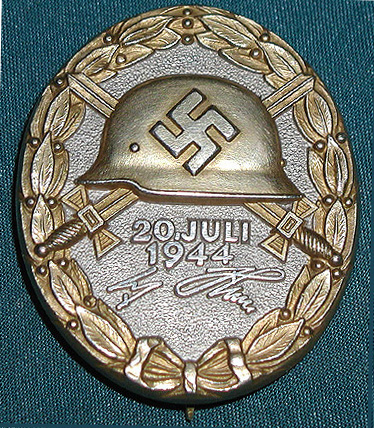
Banner motif

skull motif
The use of the skull as a symbol was limited almost exclusively to the SS. It was a gloomy symbol and therefore could not be widely used.
In the Third Reich, the skull symbolized the connection with the ancestors, as well as elitism. Elite armed formations in many countries have had or have a skull as their symbol. It means victory or death. The skull was the emblem of the 1st and 2nd Hussars of the Life Guards of the times of Kaiser Wilhelm I and Wilhelm II.
Pin employee of the Waffen-SS.
Irminsul motif
Irminsul (irminsul) - "world tree", or "tree of fate" among the Germans, a sign of the god Wotan. Mostly used in the SS, but not only there. He was painted, embodied in wood, iron, bronze. The symbol existed in many varieties, but always with a powerful trunk, from which two branches extend (sometimes bent down or twisted).
Fragment of the book cover of the society "Ahnenerbe".
sun motif
The sun is the source of life on the planet. It is a symbol of renewal and higher power. It destroys mustiness and rot. It is also the reason for the death of Icarus, who dared to fly. There is nothing more powerful than the sun.
Poster. Dead stormtrooper.
Edelweiss motif
Of the various flowers in the Reich, I liked only edelweiss. It was used as a symbol of the Bavarian units of the SA "Hochland", the Bavarian police, Wehrmacht mountain rifle divisions, etc. Edelweiss meant mountains.
In the modern Austrian army, military personnel who have completed a mountain training course wear a large edelweiss sign on the left side of the kepi.
Badge of the organization "Strength through joy".
oak leaf motif
Along with edelweiss, oak enjoyed a special location. Eichenlaub ("oak leaves") was a sign of the degree of the highest award of the Third Reich - the Knight's Cross.
Propaganda postcard with the Knight's Cross.
- In contact with 0
- Google Plus 0
- OK 0
- Facebook 0



